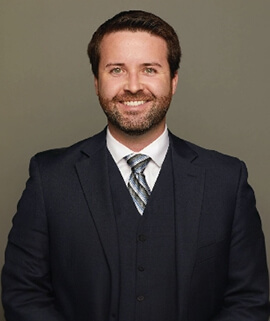Sexual Assault Statistics
- Sexual Assault and Rape: What, Where, and How
- Assault-Related Laws
- Negligence-Based Claims
- Evidence for a Lawsuit
- Valuing a Sexual Assault Claim
- Settlements and Verdicts
- – Doe v. Big Oak Flat-Groveland Unified School District
- – Students v. Los Angeles Unified School District and Glendale Junior All American Football Association Inc.
- – Coffman by way of Boehmer v. Glendale Adventist Health System
- – Carnahan by way of Burton v. Lakeside Union School District
 The majority of sexual assault victims are female, with over 91%. The overwhelming majority of women who have been raped (94%) report some symptoms of PTSD in the two weeks following the incident; 70% experience moderate to severe distress, which is the highest among incidents.
In 1 in 3 sexual assaults or rapes, the abuser was intoxicated or inebriated; further, 90% of rapes committed by acquaintances involved the presence and consumption of alcohol. Thus, it is logical to conclude that many rapes occur at the home, in establishments with liquor licenses, and at parties. 8% of rapes occur at the workplace, whether in the job site itself, the parking garage, or a similar area.
These numbers are, of course, harrowing to see, and it is an issue that should be corrected. If there is an opportunity to hold a perpetrator accountable for the actions he committed, you should seize the chance.
The majority of sexual assault victims are female, with over 91%. The overwhelming majority of women who have been raped (94%) report some symptoms of PTSD in the two weeks following the incident; 70% experience moderate to severe distress, which is the highest among incidents.
In 1 in 3 sexual assaults or rapes, the abuser was intoxicated or inebriated; further, 90% of rapes committed by acquaintances involved the presence and consumption of alcohol. Thus, it is logical to conclude that many rapes occur at the home, in establishments with liquor licenses, and at parties. 8% of rapes occur at the workplace, whether in the job site itself, the parking garage, or a similar area.
These numbers are, of course, harrowing to see, and it is an issue that should be corrected. If there is an opportunity to hold a perpetrator accountable for the actions he committed, you should seize the chance.
Find out more about how we can help you. Call (855) 339-8879 to speak with a representative now.
Sexual Assault and Rape: What, Where, and How
 Sexual assault, sexual harassment, sexual abuse, molestation, and rape are all sexual acts carried out against one person without his or her consent. Victims may be groped, touched and felt up, grabbed, forced to touch others, penetrated, and more.
The acts can happen anywhere. There have been innumerable cases of victims who were sexually assaulted by family members of all degrees, from fathers and sisters to cousins and step-parents. Many sexual assaults happen in clubs or bars where patrons are drunk, uninhibited, aroused, and cloaked in relative anonymity. It is not uncommon for inebriated individuals to get too handsy or aggressive with others, sometimes resulting in forced acts.
Sexual assault may happen in the workplace, whether by coworkers or customers. Some jobs place employees in dangerous situations; for example, overnight supervisors at businesses in dangerous areas can be prime targets for robberies and assaults.
Schools are also prime locations for sexual assaults. Young children may be supervised by teachers, educators, coaches, and other volunteers, which opens the opportunities for assault. Further, many children are impressionable, gullible, and not overly aware of the implications of the assaults. Additionally, college campuses are prime locations for sexual assault and rape, given that many young people live in dormitories or have access to alcohol and drugs. There is also much less supervision from all parties.
In many instances, victims are hesitant to call an act sexual assault. They may believe they were complicit in the action or that they could hold blame. This is a large issue in many cases and causes them to go unreported or ignored.
Sexual assault, sexual harassment, sexual abuse, molestation, and rape are all sexual acts carried out against one person without his or her consent. Victims may be groped, touched and felt up, grabbed, forced to touch others, penetrated, and more.
The acts can happen anywhere. There have been innumerable cases of victims who were sexually assaulted by family members of all degrees, from fathers and sisters to cousins and step-parents. Many sexual assaults happen in clubs or bars where patrons are drunk, uninhibited, aroused, and cloaked in relative anonymity. It is not uncommon for inebriated individuals to get too handsy or aggressive with others, sometimes resulting in forced acts.
Sexual assault may happen in the workplace, whether by coworkers or customers. Some jobs place employees in dangerous situations; for example, overnight supervisors at businesses in dangerous areas can be prime targets for robberies and assaults.
Schools are also prime locations for sexual assaults. Young children may be supervised by teachers, educators, coaches, and other volunteers, which opens the opportunities for assault. Further, many children are impressionable, gullible, and not overly aware of the implications of the assaults. Additionally, college campuses are prime locations for sexual assault and rape, given that many young people live in dormitories or have access to alcohol and drugs. There is also much less supervision from all parties.
In many instances, victims are hesitant to call an act sexual assault. They may believe they were complicit in the action or that they could hold blame. This is a large issue in many cases and causes them to go unreported or ignored.
– Uber Lyft sexual assault
Assault-Related Laws
 First and foremost, there is no specific law that allows you to sue for sexual assault itself. All sexual assault claims are assault and battery claims that have specific niches carved out to address the sexual nature.
Regardless, there are various laws and definitions in California that pertain to sexual contact. For sexual battery, the victim must have been intimately touched by the defendant while restrained; the victim must have been touched against his or her will; and the defendant must have touched the victim with the intention of sexual gratification, arousal, or abuse. Laws also protect those who have been institutionalized, medically incapacitated, or are seriously disabled.
The level of force and degree of power can determine if an act should be considered a felony or misdemeanor. Misdemeanors are less serious charges and may concern unwanted touching or groping without consent, while felony acts include forcible acts, rape, and coercion due to a position of power (such as a boss, supervisor, or professor).
Rape laws define rape as engaging in sexual intercourse with a person who is unwilling or unable to consent through the use of physical force, violence, threats, fraud, or stress. There are different kinds of rape; most common is date rape, which is often the result of drugs or nonconsensual sex between two partners. Some more specific laws pertain to spousal rape (sex with a spouse or partner against his or her consent) and statutory rape (sex with a minor under the age of 18 years old, with attention paid to the age of consent).
There is also forcible penetration with a foreign object, which is similar to rape in the definition, but does not include sexual intercourse – instead, it utilizes any item or body part that is not sexual. This is blatantly outlawed as well.
Almost all sexual assault cases are violations of consent. Be aware that consent can be implied, such as between two lovers who wordlessly engage or initiate sex; it can also be withdrawn, as in the case of some individuals who have decided to go no further during a sexual act. Many defenses will use consent as a way to escape punishment, so you should be properly aware and prepared to address such a defense.
First and foremost, there is no specific law that allows you to sue for sexual assault itself. All sexual assault claims are assault and battery claims that have specific niches carved out to address the sexual nature.
Regardless, there are various laws and definitions in California that pertain to sexual contact. For sexual battery, the victim must have been intimately touched by the defendant while restrained; the victim must have been touched against his or her will; and the defendant must have touched the victim with the intention of sexual gratification, arousal, or abuse. Laws also protect those who have been institutionalized, medically incapacitated, or are seriously disabled.
The level of force and degree of power can determine if an act should be considered a felony or misdemeanor. Misdemeanors are less serious charges and may concern unwanted touching or groping without consent, while felony acts include forcible acts, rape, and coercion due to a position of power (such as a boss, supervisor, or professor).
Rape laws define rape as engaging in sexual intercourse with a person who is unwilling or unable to consent through the use of physical force, violence, threats, fraud, or stress. There are different kinds of rape; most common is date rape, which is often the result of drugs or nonconsensual sex between two partners. Some more specific laws pertain to spousal rape (sex with a spouse or partner against his or her consent) and statutory rape (sex with a minor under the age of 18 years old, with attention paid to the age of consent).
There is also forcible penetration with a foreign object, which is similar to rape in the definition, but does not include sexual intercourse – instead, it utilizes any item or body part that is not sexual. This is blatantly outlawed as well.
Almost all sexual assault cases are violations of consent. Be aware that consent can be implied, such as between two lovers who wordlessly engage or initiate sex; it can also be withdrawn, as in the case of some individuals who have decided to go no further during a sexual act. Many defenses will use consent as a way to escape punishment, so you should be properly aware and prepared to address such a defense.
Call (855) 339-8879 or complete a Free Case Evaluation form today.
– Los Angeles Sexual Assault Defense Attorneys
Negligence-Based Claims
 To file a lawsuit against someone who sexually assaulted you, or to file a claim against an entity that should have had more monitoring or surveillance over one of its subordinates or employees, you must be able to show that you were a victim of negligence. To do this, you will have to prove these four points as true:
To file a lawsuit against someone who sexually assaulted you, or to file a claim against an entity that should have had more monitoring or surveillance over one of its subordinates or employees, you must be able to show that you were a victim of negligence. To do this, you will have to prove these four points as true:
- You were owed a duty of care, which is simple; all individuals are generally owed a duty of care by strangers to not hurt or be hurt, and if you are in an establishment, you should not be placed in harm’s way
- The duty of care was breached, which can happen if an individual inappropriately touches you or if an entity decides to abstain from monitoring an area or a person
- The breach of duty led to an incident, such as an assault, molestation, rape, or other occurrence
- The incident resulted in actual physical injuries
Evidence for a Lawsuit
 Unfortunately, sexual assault cases are among the most difficult to gather evidence for. The individuals partaking in the actions are often aware of the potential punishment and plan or act accordingly. While many accidents like car crashes and such happen in public spaces, sexual assaults often occur in private locations. There may be no security footage or witnesses in the vicinity, which can create a large lack of crucial evidence. It is also less likely for sexual assault result in the same kind of injuries that a regular assault would; while victims of battery may have bruises and lacerations, sexual assault could potentially leave no physical marks at all. In more extreme cases, like rape, there can be genital damage and other physical injuries if the struggle were violent, though.
You may be able to gather evidence for your claim, however, if you examine all possible routes. It can be extremely distressing to pursue proof, especially if you were left with emotional trauma after the incident; reliving the situation can trigger mental episodes or compromise your mental health. An attorney can help gather proof where necessary.
The immediate action you should take, though, is seeking medical attention. At the hospital or with the paramedics, you can be treated for your injuries. The doctor can write a medical report and prescribe you medication or tend to your wounds. You should keep the medical notes and hospital receipt to show what you had done and that you went to the healthcare facility in the first place.
Next, you should photograph your damages to illustrate the extent and severity, if possible. You may not have such injuries, so a doctor can confirm. If you have the ability to take photos of the abuser, whether during the act or after, you should do so as well.
Most sexual assault cases have a woeful lack of witnesses. However, there may be other victims of a perpetrator; you could potentially reach out to these victims and get additional statements and testimonies as to how the individual behaved or acted. If there were eyewitnesses, they can identify the responsible party and attest to what happened. You could also get character statements; for example, if the individual were in a bar and visibly drunk, bouncers and bartenders could attest to his belligerence and actions inside the establishment.
There may not be any security footage if the incident happened in a private residence or in a hard-to-reach area. However, if the assault occurred in a parking garage, business, school, or other location, there may be surveillance cameras inside and outside that could have captured the incident on tape. You should request copies of these videos to add to your evidence.
It is a wise idea to contact the police after an incident of sexual assault. The police can conduct an investigation and potentially arrest the responsible party. You can add the police report to your proof once it has been finalized. They can also serve as witnesses in some cases.
Once all of your evidence has been assembled, it will be paired with a demand letter requesting a certain amount of compensation and will be sent to the insurance company or will be presented before the judge and jury. It is important that you have as much evidence as possible; you do not want a claim to be based off two testimonies alone, as there will be a limited amount of proof and a jury cannot reliably or in good faith make such a judgment to force a party to pay compensation for an unproven act.
Unfortunately, sexual assault cases are among the most difficult to gather evidence for. The individuals partaking in the actions are often aware of the potential punishment and plan or act accordingly. While many accidents like car crashes and such happen in public spaces, sexual assaults often occur in private locations. There may be no security footage or witnesses in the vicinity, which can create a large lack of crucial evidence. It is also less likely for sexual assault result in the same kind of injuries that a regular assault would; while victims of battery may have bruises and lacerations, sexual assault could potentially leave no physical marks at all. In more extreme cases, like rape, there can be genital damage and other physical injuries if the struggle were violent, though.
You may be able to gather evidence for your claim, however, if you examine all possible routes. It can be extremely distressing to pursue proof, especially if you were left with emotional trauma after the incident; reliving the situation can trigger mental episodes or compromise your mental health. An attorney can help gather proof where necessary.
The immediate action you should take, though, is seeking medical attention. At the hospital or with the paramedics, you can be treated for your injuries. The doctor can write a medical report and prescribe you medication or tend to your wounds. You should keep the medical notes and hospital receipt to show what you had done and that you went to the healthcare facility in the first place.
Next, you should photograph your damages to illustrate the extent and severity, if possible. You may not have such injuries, so a doctor can confirm. If you have the ability to take photos of the abuser, whether during the act or after, you should do so as well.
Most sexual assault cases have a woeful lack of witnesses. However, there may be other victims of a perpetrator; you could potentially reach out to these victims and get additional statements and testimonies as to how the individual behaved or acted. If there were eyewitnesses, they can identify the responsible party and attest to what happened. You could also get character statements; for example, if the individual were in a bar and visibly drunk, bouncers and bartenders could attest to his belligerence and actions inside the establishment.
There may not be any security footage if the incident happened in a private residence or in a hard-to-reach area. However, if the assault occurred in a parking garage, business, school, or other location, there may be surveillance cameras inside and outside that could have captured the incident on tape. You should request copies of these videos to add to your evidence.
It is a wise idea to contact the police after an incident of sexual assault. The police can conduct an investigation and potentially arrest the responsible party. You can add the police report to your proof once it has been finalized. They can also serve as witnesses in some cases.
Once all of your evidence has been assembled, it will be paired with a demand letter requesting a certain amount of compensation and will be sent to the insurance company or will be presented before the judge and jury. It is important that you have as much evidence as possible; you do not want a claim to be based off two testimonies alone, as there will be a limited amount of proof and a jury cannot reliably or in good faith make such a judgment to force a party to pay compensation for an unproven act.
Learn more about your legal options: call (855) 339-8879 to speak with a representative now.
Valuing a Sexual Assault Claim
 Sexual assault claims can vary in value depending on the intended target and level of negligence. For one, a target may be a single individual with no ties to any businesses or companies, which means that the singular defendant would be the perpetrator. In other cases, the defendant was employed by a company, school district, government organization, restaurant, and more. This means that the company had an additional duty to ensure that its workers do not harm customers or other individuals. If people are in harm’s way or in danger of being assaulted by being around the company and the workers, the entity should be held accountable for the results. Such is the case with many claims pertaining to employees.
The value of a claim is further determined by the insurance agent who handles it. He will come up with an offer based on the types of injuries you suffered, how extensive your damages were, how much of an impact the incident had on your life and career, your age, your job type, and how responsible you were in the incident. The responsibility aspect in sexual assault claims is at times controversial; there may be many angles used by insurance agents and attorneys to show negligence on the behalf of the victim, such as by being overly inebriated.
The insurance agent will make an offer after weighing all of your damages. The offer itself can be negotiated and altered by an attorney. Generally, insurance agents want to preserve their profits and not pay out claims, especially if the evidence is not completely clear cut and there is even a shred of doubt involved. They will try to sow seeds where they can to show dubiousness and disbelief, and if they can get away with not paying out claims, they will win.
It is important, therefore, that you get representation by a sexual assault attorney who has the ability to fight for your case. Many times, sexual assault claims go to court where a jury can decide on damages, if any. The jury may award more or less than what is requested, or it may find the defense did nothing wrong or owes no compensation.
You should not believe a lawyer or insurance agent who tells you exactly what your case will yield. Civil claims can fluctuate in value from week to week, and interpretation of evidence and negotiation tactics can cause cases to be worth strikingly different amounts.
Sexual assault claims can vary in value depending on the intended target and level of negligence. For one, a target may be a single individual with no ties to any businesses or companies, which means that the singular defendant would be the perpetrator. In other cases, the defendant was employed by a company, school district, government organization, restaurant, and more. This means that the company had an additional duty to ensure that its workers do not harm customers or other individuals. If people are in harm’s way or in danger of being assaulted by being around the company and the workers, the entity should be held accountable for the results. Such is the case with many claims pertaining to employees.
The value of a claim is further determined by the insurance agent who handles it. He will come up with an offer based on the types of injuries you suffered, how extensive your damages were, how much of an impact the incident had on your life and career, your age, your job type, and how responsible you were in the incident. The responsibility aspect in sexual assault claims is at times controversial; there may be many angles used by insurance agents and attorneys to show negligence on the behalf of the victim, such as by being overly inebriated.
The insurance agent will make an offer after weighing all of your damages. The offer itself can be negotiated and altered by an attorney. Generally, insurance agents want to preserve their profits and not pay out claims, especially if the evidence is not completely clear cut and there is even a shred of doubt involved. They will try to sow seeds where they can to show dubiousness and disbelief, and if they can get away with not paying out claims, they will win.
It is important, therefore, that you get representation by a sexual assault attorney who has the ability to fight for your case. Many times, sexual assault claims go to court where a jury can decide on damages, if any. The jury may award more or less than what is requested, or it may find the defense did nothing wrong or owes no compensation.
You should not believe a lawyer or insurance agent who tells you exactly what your case will yield. Civil claims can fluctuate in value from week to week, and interpretation of evidence and negotiation tactics can cause cases to be worth strikingly different amounts.
– Uber Lyft sexual assault attorney
Settlements and Verdicts
 There are various cases of sexual assault and rape that have wildly different outcomes. In most scenarios, a perpetrator is tried criminally as well as civilly. Many negligence-based claims in the personal injury realm are against other entities that allowed the assault to happen or could be considered complicit in the act. Below are a few examples of cases that have resulted in damages and dismissals alike.
There are various cases of sexual assault and rape that have wildly different outcomes. In most scenarios, a perpetrator is tried criminally as well as civilly. Many negligence-based claims in the personal injury realm are against other entities that allowed the assault to happen or could be considered complicit in the act. Below are a few examples of cases that have resulted in damages and dismissals alike.
Doe v. Big Oak Flat-Groveland Unified School District
In “Jane Doe” v. Big Oak Flat-Groveland Unified School District, Dave Urquhart, Paso Robles Joint Unified School District and Jeremy Monn, an underage girl was engaged in a sexual relationship with her high school agriculture instructor. Monn worked at Don Pedro High School prior to Paso Robles, and previous representatives provided him with numerous positive recommendations and referrals. He secured a position at Paso Robles and was found to be acting inappropriately toward various female students. The plaintiff’s counsel stated that Monn had made many advances towards female students, resulting in him grooming and conditioning a student until she slept with him. There were numerous statements that the previous school district did not address any complaints and did not provide adequate supervision and monitoring of its teachers and student body. The previous district, the current school, and the superintendant all denied knowledge of any misconduct or prior acts. The female student whom Monn had sexually assaulted required counseling and therapy sessions. The abuse caused her to sustain depression, anxiety, and other emotional and mental traumas. In settling, the school districts combined paid $5 million to the student, while Monn paid an unspecified amount himself.call (855) 339-8879 to speak with a representative and schedule a free case review.
Students v. Los Angeles Unified School District and Glendale Junior All American Football Association Inc.
In John FRR Doe, John DEE Doe, John FDG Doe, John FEJ Doe, John FEM Doe, Maria De Jesus Torres Diaz and Edgar Adolfo Espana as Guardian v. Los Angeles Unified School District, Benjamin Franklin High School, Glendale Junior All American Football Association Inc., and Jaime Jimenez, numerous students complained about sexual misconduct from a volunteer coach. Nine plaintiffs who were minors at the time of the incidents were allegedly victimized by Jaime Jimenez. He was the volunteer football coach at the school and was accused of sexual assault and molestation from 2002 to 2015. Many of the students were football players. The separate incidents were consolidated into a single case. The plaintiffs’ counsel stated that Jimenez routinely gave students rides home from practice and from school, bought them gifts and items, invited them to his home, shared with them alcohol and beer, took photos with them, and more. The defense claimed that it had no knowledge of Jimenez’s actions and did not notice any red flags in his behavior. Before the trial, the district and the parties agreed on an $8 million settlement. Jimenez had previously been sentenced to state prison for 36 years due to his extensive sexual abuse of three minors.Coffman by way of Boehmer v. Glendale Adventist Health System
In Cheryl Coffman, By and Through Her Guardian Ad Litem, Norine Boehmer, v. Glendale Adventist Medical Center, Adventist Health System/West, and Anthony Taylor, an 18 year old girl and another individual had sexual contact while under the care of the facility. Cheryl was placed under involuntary psychiatric care after she had acted violently towards her mother in an outburst. She had been previously diagnosed with schizophrenia and bipolar disorder, and she had a developmental delay. According to her mother, her mental age was closer to 12 years old than 18 years old. She was also regarded as hypersexual and boy-crazy; her mother instructed the staff to not let her be alone with any boys due to the fact that was mentally a minor. Taylor was brought in after Cheryl’s admission for a 5150 hold and had exposed himself to staff. One morning, Cheryl and Taylor met in the hallway where they allegedly shook hands; they then went back to Taylor’s room, where a charge nurse found them a few minutes later. Cheryl was nude on the bathroom floor while Taylor was shirtless with his pants on; Cheryl claimed that the two had sex, while Taylor said that he had put his finger inside Cheryl’s vagina, sucked on her breasts, and guided her hand to his penis. Taylor was arrested and charged with penetrating a mentally challenged female with a foreign object. The plaintiff filed a claim against the health facility citing negligence. They argued that there should have been a one-on-one safety attendant present with Cheryl at all times and that the lack of security cameras and monitoring systems was a key reason that the abuse happened. They further stated that a risk assessment should have been performed and she should have had higher safety precautions. This lack of attention and care, they claimed, was the primary reason for the sexual abuse. The defense claimed that there was no breach of duty. The two were checked on every 15 minutes per protocol and the lack of a charge nurse was only for five minutes during the sexual act. The defense’s main point was that the engagement of sexual behavior in and of itself is not cause for a breach of care, and that adult abuse pertains to the lack of provisions of food, water, and shelter. Cheryl was provided with basic medical care as needed, including medication and psychiatric help. The jury ruled in favor of the defense, denying a demand offer of over $1.2 million dollars. It stated that there was no presence of adult abuse by way of the health facility.Call (855) 339-8879 to schedule a free legal consultation.
Carnahan by way of Burton v. Lakeside Union School District
In Katherine Carnahan, by and through her Guardian Ad Litem, Julie Burton v. Lakeside Union School District and Shane Cable, a young girl was allegedly molested by a director at her school. Katherine was a fourth grade student when she was called into the director’s office. The director, Cable, was the head of the after-school program. Katherine alleged that Cable had sexually molested in the office on numerous occasions. There were also claims that he had openy picked up, hugged, and behaved inappropriately towards other students in the open, prompting the claim that the school and district were aware of the issues and did nothing to correct them. The plaintiff claimed that the district was negligent in hiring, retaining, and monitoring Cable. As a result, she said she suffered emotional distress and counseling. The defense countered that according to Kahterine’s testimony, she was touched two inches above her vagina and two inches below her belly button, which does not constitute sexual abuse. The defense also stated that even if there had been sexual contact, it was not the fault of the district and the school was not at fault in any way for the monitoring or hiring of Cable. The jury sided with the district and awarded no damages to Katherine.Conclusion
Provided there is enough evidence, perpetrators may be hit with jail time and have to pay damages. However, proving that an institution was negligent can be difficult. It is very possible that an establishment was not aware of the goings-on and had no additional duty to meticulously scrutinize all of its workers. It is harder to show that there should have been no additional supervision in the cases of schools and school districts, though.Potential Restitution for a Sexual Assault Lawsuit
Victims of sexual assault can pursue damages and receive compensation from the perpetrators. These damages can cover different types of expenses and may be awarded by a company, an individual, a school district, and many other parties. Because a sexual assault claim is a personal injury lawsuit, the damages are monetary. There may be separate criminal charges that can land an abuser in jail, pay fines, complete community service, be labeled a sex offender, and more. Because the consequences are much higher in criminal cases, the burden of proof is proportionally high as well. In civil cases, you must simply show that a party was negligent and cause you harm or intentionally hurt you. Examples of damages you can acquire in a lawsuit include:- Medical expenses from the past and future
- Therapy costs
- Property damage if any personal items or belongings were lost or broken in the incident
- Lost income if you were unable to return to work for some time following the incident
- Pain and suffering damages, which cover anxiety, fear, trauma, PTSD, and more (PTSD is a common side effect of sexual assault)
Complete a Free Case Evaluation form or call (855) 339-8879.
Statute of Limitations on Sexual Assault Claims
A sexual assault claim is a form of personal injury, which means that, according to California Law, you only have 2 years from the date of the damage to file a lawsuit. If you do not take legal action within this time period, you will not be allowed to pursue any compensation and your claim will be thrown out. Take note that this applies to civil claims in which you pursue monetary compensation; criminal charges are different. This two-year limit allows the victim to gather evidence in a timely manner and it also allows the defendant to gather evidence to the contrary. The sooner you take legal action, the more likely it is that your key proof will be intact and not corrupted or lost. Many of the main pieces of evidence for sexual assault claims are time-sensitive; for example, the longer ago an incident happened, the higher the chance the memory of it will be foggy. The 2-year limit is not static, though. There are several circumstances in which the statute of limitations can be temporarily extended. The most common scenario involves an underage victim. Underage individuals are not permitted to file lawsuits; a guardian can file a claim on their behalf, but it is not required. Minors can wait until they turn 18 years old to sue, which would cause the statute of limitations to begin on their birthday. Further, the victim may be rendered mentally or physically incapacitated after the incident. This is common in aggravated assault cases where intense physical violence accompanies the sexual act. The victim could be left in a coma or in a psychiatric breakdown. This would preclude the victim from having to adhere to the statute of limitations until functional health or awareness returns. Additionally, the defendant must be present in the state you are in if you wish to sue. This causes many defendants to flee or go on extended leaves in an attempt to evade the lawsuit. However, the statute of limitations will simply pause while the intended target is out of town; the claim would then resume when he returns. The difficulty of pinpointing the exact dates involved in a sexual assault claim can be difficult and troublesome. You may not know precisely when incidents happened, and you do not want to run the risk of missing your opportunity to sue. It is recommended that you allow a lawyer to help you with your case so that you do not miss any important deadlines.Assault and Battery
– Uber Lyft sexual assault
– Assault and Battery Attorney
– Sexual Assault Cruise Ship Lawsuits
– School Sex Abuse
– Amusement Park Sexual Assault
– Church Priest Sexual Abuse
– Hotel Sexual Assault
– Sexual Assault Defense
– Nightclub Security Sexual
– Security Guard Sexual Assault
– Sexual Assault Statistics
– Summer Camp Injury | Sexual Abuse
– College University Liability for Sexual Assault
– Parking Lot Assault









